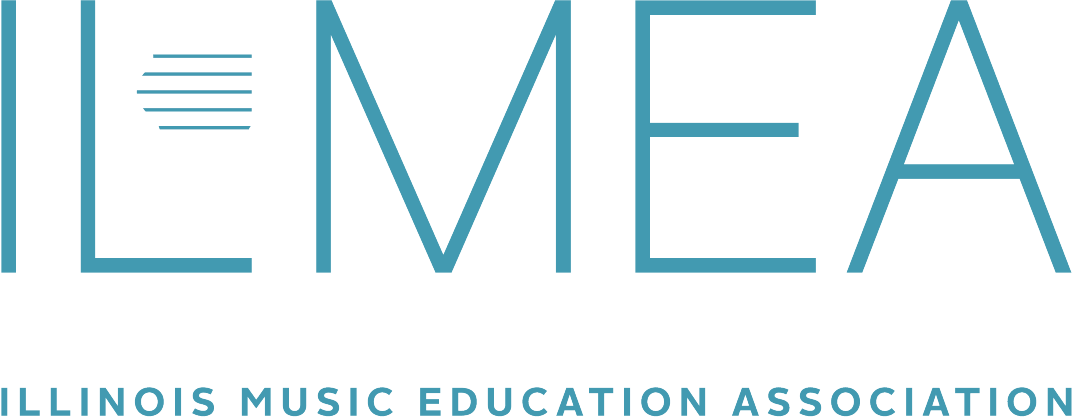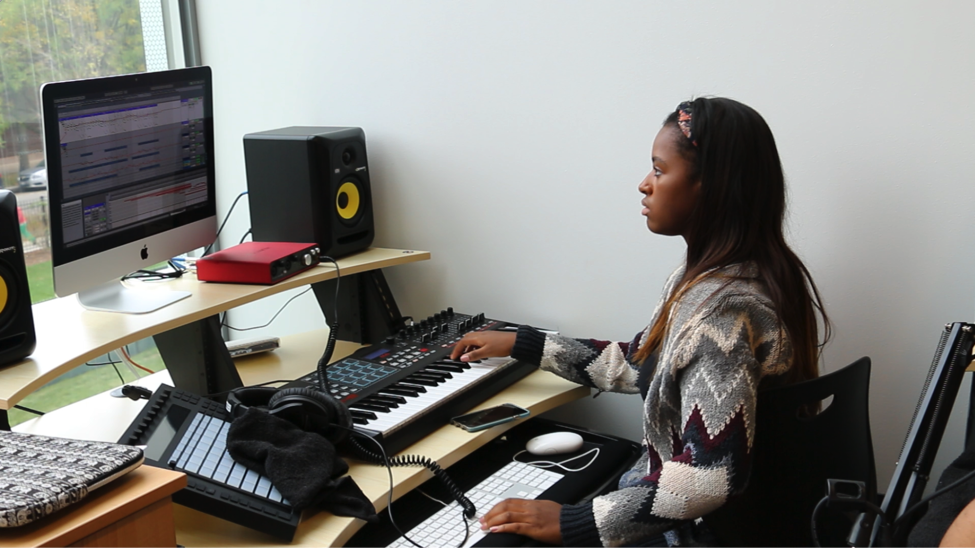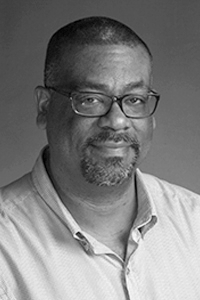By Francisco Dean
In this 3-part series published in the Illinois Music Educator Journal, Francisco Dean, a high school music teacher at the University of Chicago Laboratory Schools, talks about the merits of music technology offerings as a means to reach students that would otherwise not pass through the doors of a music classroom and how offerings like this add valuable diversity to school music departments in general. Part One, will explore the rationale behind the addition of a digital music offering and in Part Two, he will show you the ropes of planning for and starting a digital music program. Part Three will focus on curriculum, with ideas for scope-and-sequence, abundant resources for support and next steps to take an established digital music program even deeper.
A Tale of Two Students
Jake: A trumpet player in the band. Seldom practiced. Low interest. Minimal effort in pushing himself to improve. Low performance overall.
Pardi: A student in my digital music class. Focused. Creative. Eager to grow. A mentor to his peers. Works independently releasing albums on iTunes and clear drive to succeed.
Two very real, yet very different students. But not really. As it turns out, Jake and Pardi are the same person. (“Pardi” is the stage name under which Jake releases his albums.)
Jake, as an ensemble member, might be a student you’ve encountered more times than you care to count.
Pardi is the student currently at your school that most of you have never met.
Keep Jake in mind - we will come back to him soon.
Think for a moment how you identify professionally. Band director? Choral director? Orchestra director? These labels sell you short. I direct performing ensembles, but like all of you, I am a music educator. If we’re going to identify as such, we have a calling to provide a worthwhile music experience to as many students as possible. Historically, our focus has been on the students who play in our ensembles (and these ensembles are incredibly valid and important, proven by their sustainability over the decades). But we have an enormous pool of students who have either taken that path with little personal return, or skipped that path due to lack of interest. As educators, we can mistakenly dismiss those students as uninterested in a meaningful music experience. Not so! More times than not, our net of music offerings has simply not been broad enough. Technology has been with us for decades and the simple truth is that an increasing number of music programs now include digital music offerings. More than just “making beats”, a legitimate window to unlocking student creativity has been discovered.
Another equally simple truth is that many programs have obstacles preventing this from happening: budget, physical space, time in the schedule and good-old-fashioned fear of technology. Many educators do not feel prepared to include a digital music class in their department because it was never a core in their music education training (music educator preparation programs, please take note - you can help ease this burden and prepare future educators). But from those who have taken the leap, you can learn and be encouraged.
Question #1: What is digital music?
Digital music, simply put, is any method of music creation that uses the computer. That’s it. Digital music can be composed, recorded or performed live. It has the benefit of a larger palette of sounds, but it can also include traditional instruments such as brass, strings or the human voice. We can create and perform this music in a variety of ways, but the process by which it is created and performed is equally valuable. With digital music, the toolbox simply utilizes technology and the possibilities that result are endless.
Question #2: Why include a digital music offering?
The reasons to consider adding a digital music component to your program are numerous! For a few examples:
Technology is a relevant and growing part of society and culture. Academically, it is integrated into math, science and English disciplines. Music is no different.
Students are already dabbling in digital music. Countless software and smart-device apps have made music creation incredibly accessible with little or no prior experience required. As an educator, you can tap into this and give them added structure along with the benefit of your music expertise.
It provides different pathways to introduce, teach and reinforce core elements of music. Concepts of pitch, rhythm, harmony, expression and music mechanics are all found in abundance through digital music.
It is a valid way to showcase your music program’s diversity and show that it is maintaining pace with the growing trends in music technology.
The overall size of your music program does not matter - big schools with 300-piece marching bands, or small school ensembles with potluck instrumentation. Digital music engages the student individually and enjoys a level playing field where students from any school can enjoy the same experience.
The list goes on, but in truth, justifying the rationale is not the obstacle. The bigger roadblock for most teachers is technology itself - yet another thing to learn! I can relate. I was once that teacher. The first day I saw a digital music lab, I thought I was looking at the control room at NASA. Looking back on my own experience, I can confidently say, “You can do this!” Your role has less to do with being responsible for every aspect of digital music and more to do with turning students loose with your guidance to unlock music that’s already inside them. Your students will absorb content at a surprisingly fast rate, often teaching you as much as you teach them during the process Having said that, learning to teach digital music, just like any other pedagogy, takes buy-in, time and effort, but it can be fun and rewarding and I promise you won’t have to figure it out alone.
Question #3: What kind of student makes a good candidate for digital music?
Let’s go back to Jake for a moment. His story is not to imply that the only students suited for digital music are the ones who were not successful in traditional performing ensembles. Jake’s story was just one example. In truth, there is no profile for a digital music student, except for the curiosity to give it a try. Our music course offerings are like fishing nets. The more variety we offer, the wider the net, the more students we can catch and provide them with meaningful music experiences. In this case, without a digital music offering, Jake might have gone unnoticed. I might have dismissed him as a student with a bad attitude about music and never gotten the chance to discover how incredibly passionate about music he is.
So Question #3 - I used to think that a good candidate for digital music was the kid who had a grounding in music theory. Students had to take a theory class first, or demonstrate the equivalent of that knowledge. Needless to say, my digital music class enrollment was small with that criteria. As part of my own growth, I attended digital music workshops. Through these, I met students young and old who were creating incredible music with none of the theory background I had been requiring from my own students, yet they still developed an understanding of those fundamentals. My eyes opened and my criteria changed.
What I look for now is a student who has the interest, plain and simple, although it’s true that interest alone is not enough. Knowledge of the piano keyboard helps. Familiarity with major scales. Some experience with chords. If a student has an interest in digital music, but lacks these fundamentals, I give them resources that build those foundations. There’s a balance that I am trying to find - I want to equip the students with basic skills that will ensure success and a positive experience, but I also don’t want to discourage them by making these fundamentals feel overwhelming.
Now, years later, enrollment numbers in the digital music classes I teach have exploded to the point that we have added multiple sections. Additionally, many of these students are now choosing college majors and minors that incorporate music technology, such as digital music production, studio recording and engineering, music business and contemporary music performance. The digital music classes did not create the interest - the interest from the students created the classes and the classes provided an avenue to provide structure, nourishment and encouragement. It is proof that the enthusiasm was there all along, but now we are tapping into that enthusiasm.
There is quite a bit of material for ongoing discussion around this topic, but the most important point here is acknowledging that digital music is a real and valid entity, arguably providing more career opportunities than the traditional ensembles we have directed for decades. At the very least, it offers an alternative path to give students another option for a meaningful music experience. It’s ironic that we preach about the merits of why music should stay in schools, yet many schools lack the bridge that connects traditional music teaching to modern-day practice and application. If anything, a path through digital music offers a way to marry the ideas in which our traditional ensembles have lived with modern music-making and practices.
As you begin the new school year, take a moment to look at the student body - those sitting in your ensembles and those walking past the classroom door. Consider the untapped potential that you have the tools and opportunity to unleash with the inclusion of digital music as part of a well-rounded school music program.
Francisco Dean is in his 10th year as a member of the Lab School faculty and 23rd year overall teaching. He holds a Bachelor’s Degree in Music Education from Southwest Texas State University and a Masters in Jazz Studies from Indiana University. At the Lab School, he heads the high school jazz ensemble and music technology course offerings, which include two levels of digital music composition as well as a class for studio recording and mixing. You can reach out to him at [email protected].




